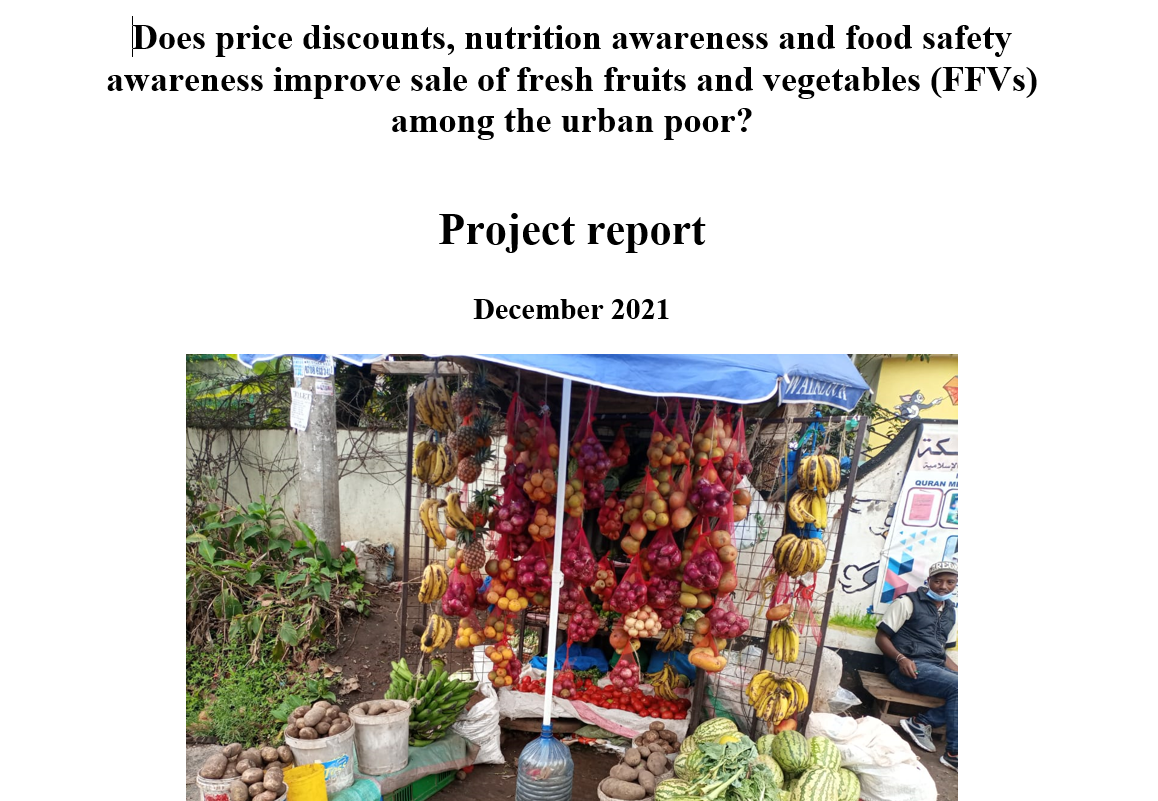The majority of the urban poor are food insecure and undernourished due to poor quality of their diets. Interventions to boost food nutrition and safety awareness and affordability of healthier and more nutritious foods in low income urban would be helpful in changing dietary behavior and improving food and nutrition security. There is, however, limited evidence on the effects of price discounts and provision of nutrition and food safety information to consumers through their food environment, particularly using experiments. This study, uses AB tests to evaluate the effects of price discounts and nutrition and food safety information on the quantities of target fresh fruits and vegetables (FFVs) bought by consumers. The study uses panel data collected from 300 FFVs’ vendors in the slums of Nairobi who are categorized by three treatment groups (price discount, nutrition information and food safety information) and a control group. The survey data focuses on characteristics of the vendors and their enterprises, FFVs traded and their sources, pricing of the target FFVs, food safety and nutrition awareness and trends or quantity of target FFVs orders purchased by the vendors. Descriptive analysis is used to analyze the data. The majority of the vendors have basic knowledge about nutrition. Similarly, the vendors have some knowledge on food safety, which translates to implementing partial food safety measures. Food safety and nutrition awareness are still issues of concern among food vendors in the slum areas and therefore more training on the same would help to improve the food safety and nutrition knowledge, attitude and practices among the vendors. With respect to the demand pattern and trends during intervention, the quantities of most of the target FFVs increased during the first month of intervention but afterwards they either decreased till the last intervention month or decreased in the second month and then increased again in all the treatment groups. This was the same for the number of orders in a month and the number of target FFVs ordered in a month for all the treatment groups. A rigorous econometric analysis is required to assess the full impact of the interventions.
Chege, C.G.K.; Mbugua, M.; Onyango, K.; Kabach, J.; Lundy, M.

